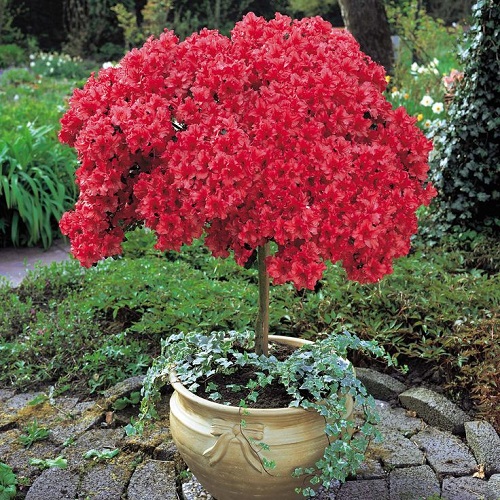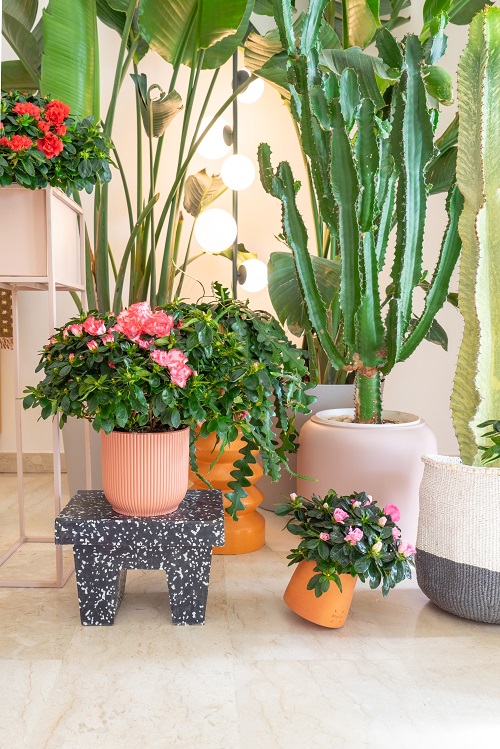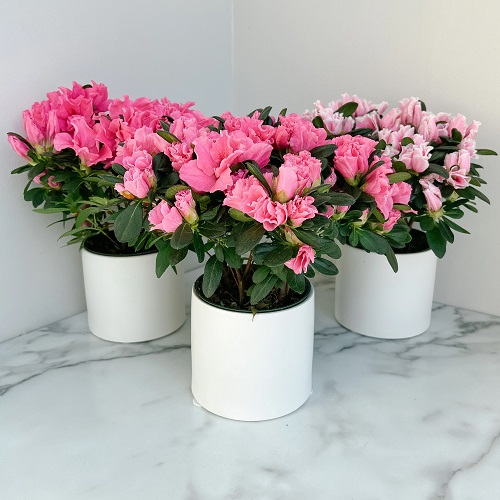Looking to add a pop of vibrant color to your home? Learn everything about How to Grow Azalea in Pots in detail!

If you’re looking for a way to liven up your outdoor space, growing azaleas in pots is a fantastic option. These stunning plants boast vibrant, eye-catching blooms that are sure to brighten up any patio or balcony. So let us get into How to Grow Azalea in Pots.
Learn How to Grow Oregano in Pots here
Azalea Plant Information
Before we give you the answer to your question, “How to Grow Azalea in Pots,“ let us enlighten you with Azalea Plant Information. Azaleas are a type of flowering shrub that belongs to the Rhododendron genus.
They’re native to several regions in Asia, including China, Japan, and Korea, as well as parts of North America. Azaleas are highly valued for their colorful, showy blooms that come in shades of pink, red, purple, and white.
These plants typically prefer acidic soil with good drainage, and they thrive in partial shade or dappled sunlight. Azaleas are often used in landscaping as decorative shrubs, and they’re also popular for use in bonsai and as indoor plants. Wide varieties of azaleas exist, including both evergreen and deciduous types.
The height and spread of an Azalea plant can vary depending on the cultivar, growing conditions, and pruning practices. However, as a general guideline, most Azalea plants will reach a height of 3 to 6 feet (0.9 to 1.8 meters) and a spread of 2 to 5 feet (0.6 to 1.5 meters) at maturity.
Dwarf varieties, such as the ‘Gumpo Pink’ or ‘Stewartstonian’ cultivars, may only reach a height of 1 to 2 feet (0.3 to 0.6 meters) and a spread of 2 to 3 feet (0.6 to 0.9 meters). On the other hand, larger cultivars, such as the ‘Formosa’ or ‘George L. Taber’ cultivars, may grow up to 8 feet (2.4 meters) in height and spread.
Learn everything about Growing Zinnias in Pots here
How to Grow Azalea in Pots?
1. Selecting the Right Pot
The first step in growing azaleas in pots is selecting the right container. Azaleas require well-draining soil, and they do not like to sit in water. Therefore, it is important to choose a pot that has drainage holes in the bottom.
You can use any type of pot as long as it has drainage holes, but it is recommended to use clay or terracotta pots as they allow for better air circulation and drainage.
2. Choosing the Right Soil
Azaleas require acidic soil with a pH range of 4.5 to 6.0. Therefore, it is important to choose the right soil for your azaleas.
You can purchase acidic soil from a garden center or nursery, or you can make your own by mixing equal parts of peat moss, pine bark, and perlite.
3. Planting Azaleas
Once you have selected the right pot and soil, it is time to plant the azalea. Here are the steps to follow:
- Fill the pot with soil up to about 2 inches below the rim.
- Remove the azalea from its container and gently loosen the roots.
- Place the azalea in the center of the pot, making sure that the top of the root ball is level with the soil surface.
- Fill in the remaining space with soil, making sure to tamp it down gently.
- Water the azalea thoroughly, making sure that the water drains out of the bottom of the pot.
If you are starting the plant from seeds, follow this:
- Fill a small pot with a well-draining potting mix.
- Moisten the soil with water until it is evenly moist but not soggy.
- Place the azalea seed on the surface of the soil.
- Lightly cover the seeds with a thin layer of soil, no more than 1/4 inch deep.
- Place the seed tray or pots in a warm, bright location, but not in direct sunlight.
- Keep the soil moist but not wet, water the tray or pots with a spray bottle when the top layer feels a little dry to the touch.
Azalea Plant Care
Fertilizer
Azaleas need regular fertilization to stay healthy and produce beautiful blooms. You can use a balanced liquid fertilizer diluted to half-strength, once in 4-5 weeks. Be sure to follow the instructions on the label, and don’t over-fertilize, as this can damage the plant.
You can also make your own organic fertilizer by mixing equal parts of cottonseed meal, bone meal, and greensand. This mixture provides a balanced blend of nutrients and can be worked into the soil around the base of the plant.
Want to Make Organic Fertilizers from Kitchen Scraps? Click here
Pruning
Pruning your azalea is an important part of its care. Prune after it has finished blooming, typically in late spring or early summer. This is the best time to remove any dead or diseased branches, as well as any branches that are crossing or rubbing against each other.
You can also prune your plant to shape it or control its size, but be careful not to remove too much growth at once, as this can stress the plant.
Pests and Diseases
Azaleas can be susceptible to a few pests and diseases, but with proper care, you can prevent most problems.
One common issue is lace bugs, which can cause yellowing leaves and tiny black spots on the foliage. Also, keep an eye out for aphids and spider mites. You can control them by using insecticidal soap or neem oil.
Another common problem is root rot, which can occur if the plant is overwatered or the soil doesn’t drain well. To prevent root rot, make sure your azalea is planted in well-draining soil and that the pot has adequate drainage.
Finally, watch out for fungal diseases, which can cause leaf spots and other issues. To prevent fungal diseases, make sure your azalea has good air circulation and avoid getting water on the foliage when you water the plant.




